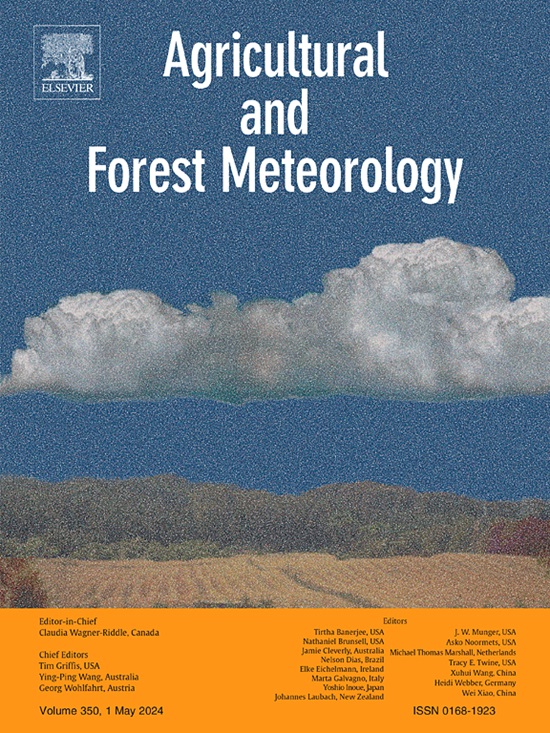Similar response of canopy conductance to increasing vapor pressure deficit and decreasing soil conductivity with drought among five morphologically contrasting but co-occurring pine species
IF 5.6
1区 农林科学
Q1 AGRONOMY
引用次数: 0
Abstract
Knowledge of plant hydraulics facilitates our understanding of the capabilities of forests to withstand droughts. This common-garden study quantified the hydraulic response to variation in sandy soil conductivity and atmospheric vapor pressure deficit (VPD) of five morphologically contrasting, wide-ranging pine species (Pinus virginiana, P. echinata, P. taeda, P. elliottii, P. palustris) of the Southeastern US, a region experiencing relatively high occurrence of hydrological droughts, which are projected to increase in frequency and severity. We employed a Bayesian hierarchical model to estimate xylem hydraulic parameters associated with drought vulnerability curves (VC) for terminal branches and shallow roots. We found that branches in all of the pine species were more resistant to cavitation-induced embolism and had greater hydraulic safety margin than roots. Among all species, P50 (i.e., water potential at which 50 % conductivity is lost) and S50 (i.e., the slope of VC centered on P50) of roots showed an increasing trend from shorter- to longer-needle species. By contrast, hydraulic conductivity at saturation (ksat) of either branches or roots did not exhibit any trend with needle length. We devised a simplified index for daily average canopy conductance (GcI), computed from high-frequency sap flux measurement. Regression of GcI showed that mean daytime VPD accounted for most of the variation in GcI (> 60 %), followed by unsaturated soil hydraulic conductivity (ksoil; 24 %), whereas in situ root conductivity accounted for the least (< 5 %). All species exhibited a linear-log relationship between the variation in GcI unexplained by VPD and ksoil, a pattern consistent with preventing soil water conditions from dropping to low levels where ksoil declines dramatically. We concluded that the shorter-needle species (P. virginiana and P. echinata) are likely to tolerate drought better than the other species, due to more resistant roots and a moderate-to-high sensitivity of GcI to VPD and ksoil.
求助全文
约1分钟内获得全文
求助全文
来源期刊
CiteScore
10.30
自引率
9.70%
发文量
415
审稿时长
69 days
期刊介绍:
Agricultural and Forest Meteorology is an international journal for the publication of original articles and reviews on the inter-relationship between meteorology, agriculture, forestry, and natural ecosystems. Emphasis is on basic and applied scientific research relevant to practical problems in the field of plant and soil sciences, ecology and biogeochemistry as affected by weather as well as climate variability and change. Theoretical models should be tested against experimental data. Articles must appeal to an international audience. Special issues devoted to single topics are also published.
Typical topics include canopy micrometeorology (e.g. canopy radiation transfer, turbulence near the ground, evapotranspiration, energy balance, fluxes of trace gases), micrometeorological instrumentation (e.g., sensors for trace gases, flux measurement instruments, radiation measurement techniques), aerobiology (e.g. the dispersion of pollen, spores, insects and pesticides), biometeorology (e.g. the effect of weather and climate on plant distribution, crop yield, water-use efficiency, and plant phenology), forest-fire/weather interactions, and feedbacks from vegetation to weather and the climate system.

 求助内容:
求助内容: 应助结果提醒方式:
应助结果提醒方式:


